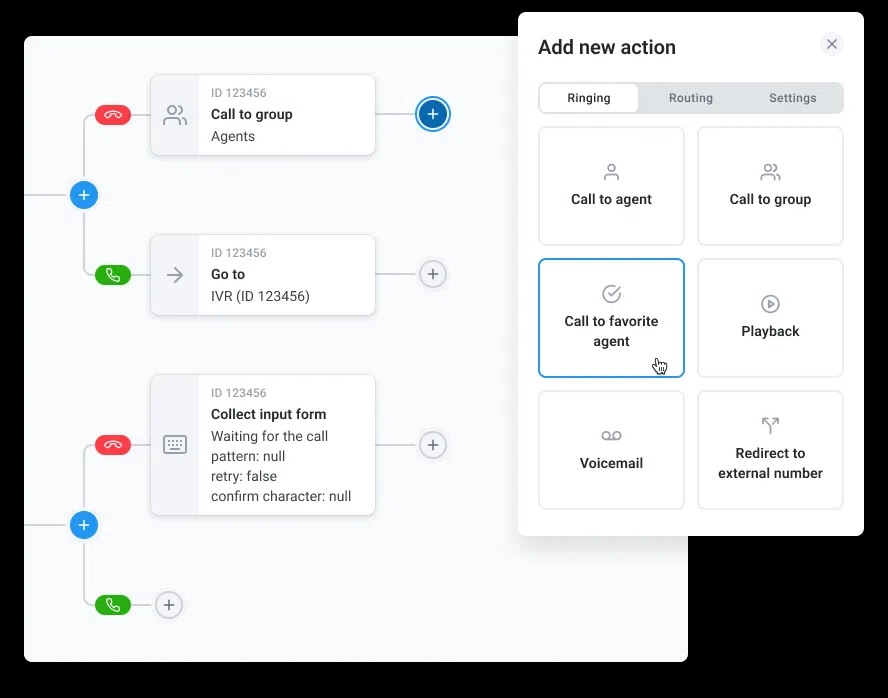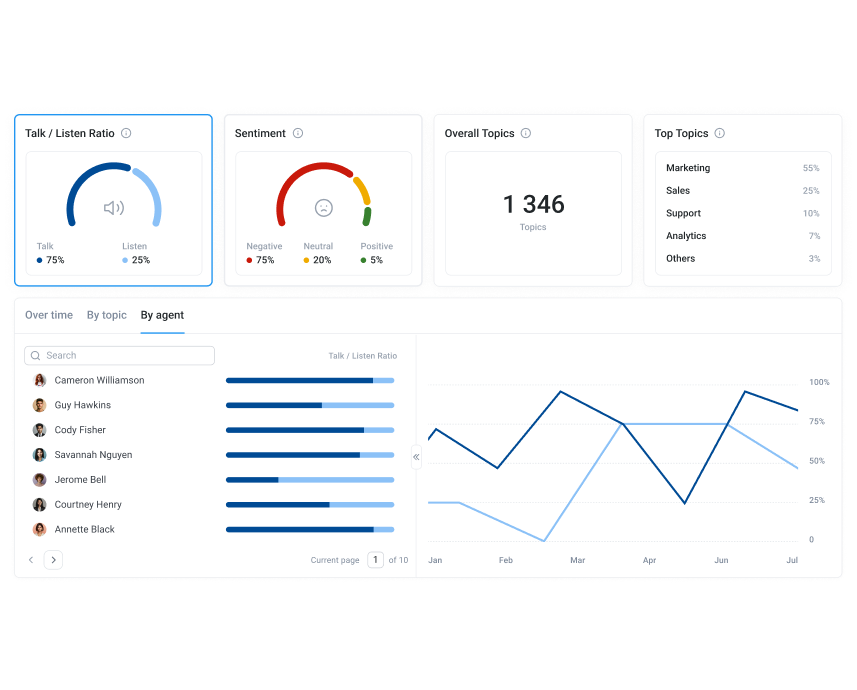Data Fragmentation: A Guide for Ops, IT, and Sales Managers

Your biggest client just switched to your competitor.
Not because of your product. Not because of your pricing. But because critical warning signs were trapped in fragmented systems until it was too late.
Right now, your business is hemorrhaging money and opportunities through invisible cracks.
Every day, your teams make decisions based on incomplete data that’s scattered across 17 different locations and tools. That sales forecast you just presented? It’s missing 40% of your pipeline data. The customer health scores your success team relies on? They’re blind to over half of your customer interactions.
The numbers are staggering. Companies have lost millions of dollars* only due to poor data integration—and the truth is that it’s not a one off scenario.
This guide isn’t just about fixing data problems. It’s about survival in an age where fragmented data kills companies. We’re here to show you how to manage your data better, and convert it into unified and actionable insights that give you an edge over your competition. Let’s dive in!
Key Takeaways:
- Hidden data fragmentation can cost your business millions in lost opportunities and missed insights.
- CloudTalk can turn your disconnected data into a unified intelligence platform that breaks down communication silos.
- Practical strategies like data governance and technology can help transform fragmented data into a powerful competitive advantage.
Empower your teams with unified data
The Impact of Data Fragmentation on Business Ops
Data, when used correctly, helps you make better business decisions that benefit your customers. But when it’s scattered across multiple systems, it creates more problems than insights.
Let’s examine exactly how data fragmentation can negatively impact your operations:
- Operational efficiency: High levels of data fragmentation force 37% of data leaders to spend most of their time solving problems, rather than driving transformation. Instead of moving work forward, this creates critical delays in accessing and acting on time-sensitive information.
- Customer experience: “Personalization is the key to cutting through the noise and making a meaningful connection with customers,” says Angela Ahrendts, former SVP of Retail at Apple. Yet fragmented customer data makes this impossible, forcing every interaction to start from scratch rather than building on previous touchpoints. This ends up frustrating clients with redundant questions and inconsistent responses.
- Revenue growth: Disconnected systems obscure valuable patterns in customer behavior and purchasing signals. Companies bleed revenue potential when cross-sell and upsell opportunities vanish into the gaps between platforms.
- Team collaboration: Department-specific knowledge becomes trapped in specialized software that other teams can’t access or interpret. Key insights get stranded in Salesforce while vital context sits in Slack, leaving teams to operate on conflicting versions of customer truth.
Common Causes of Data Fragmentation
The cracks in your data don’t form overnight. They start small—disconnected tools, siloed teams, outdated processes—and before you know it, you’re making critical decisions with half the picture. To understand how your business got here, let’s break down the four biggest culprits behind data fragmentation.
Tool Sprawl and Integration Gaps
Enterprise tech stacks have exploded with rapid SaaS adoption (about 130 apps), leaving IT teams struggling to manage dozens of disconnected platforms. Each new tool marketing, sales, or support teams adopt independently becomes another isolated data silo, fragmenting the customer journey further.
Manual Data Management
Companies rely on humans and error-prone copy-paste processes when moving information between systems. Meanwhile, vital updates get trapped in email threads and chat messages instead of flowing through proper channels to decision-makers; creating ripples of inaccuracy across operations. By leveraging MySQL export to CSV, organizations can automate the transfer of data, eliminating the risk of human error and ensuring seamless communication between systems.
Inconsistent Data Processes
Different departments develop their own ways of collecting, storing, and labeling data. Without standardized protocols, critical business information gets trapped in department-specific formats and taxonomies.
Legacy System Constraints
Outdated systems lack modern APIs and integration capabilities, creating technology dead ends. These aging platforms hold valuable historical data hostage while newer tools can’t access or sync with them in real-time. Today, integrations are a #1 buyer consideration for customer service, marketing, sales & customer success software.
How might this all play out? Let’s take the example of PayClear, a fictional brand that processes $2B in annual transactions:
Operations team
Inside the operations team:
PayClear’s Operations Director, Kate, discovers they’re paying for 3,800 unused software licenses because user data is split between Workday and Okta. When the CFO demands a complete audit of SaaS spending, her team spends three weeks manually matching employee records across six different systems – only to find they’ve been double-paying for several enterprise subscriptions.
It team
Inside the IT team:
PayClear’s IT Director, Marcus, faces a security audit disaster. A former employee still has access to critical systems because their offboarding data never synced between HR’s platform and IT’s access management tools. When he tries to generate an access report, he finds 140 inconsistencies between Active Directory and their SSO provider, creating major compliance risks.
sales team
Inside the sales team:
Sarah, PayClear’s VP of Sales, loses a $2M enterprise deal because her team couldn’t see the full picture. While her reps were pushing for an upsell, customer success had logged several critical integration tickets, engineering knew about pending API changes that would affect the client, and finance had flagged late payments – but none of this data reached the sales team’s dashboard.
Do any of these feel familiar?
Then, the next section can help!
3 Ways to Combat Data Fragmentation
Even though PayClear’s story is fictional, most organizations tend to face the same exact data storage and consolidation problems. However, those that succeed in successfully tackling data fragmentation focus on three critical strategies:
1. Emphasize the Importance of Integration and Centralization
Modern businesses can’t afford data islands. Especially when omnichannel service excellence is the new success differentiator. B2B companies that master integrated channels see 13.5% EBIT growth, compared to just 1.8% for their fragmented peers.
A true omnichannel experience means customers move seamlessly between touchpoints without repeating themselves—while teams access unified customer context. This requires a central nervous system where customer interactions, product usage, and operational data converge into actionable intelligence. Every new tool must be evaluated against its ability to strengthen this unified view rather than create another silo.
2. Implement Data Governance Policies
Forget rigid policies that teams ignore. Effective data governance means embedding data quality into daily workflows. This could mean automating data validation at entry points. Additionally, building clear ownership matrices for different data and feedback loops to make it rewarding.
Success requires three key elements:
- A core governance team setting standards
- A steering committee aligning data practices with business goals,
- Empowered data stewards managing implementation across departments
3. Use Technology to Address Data Silos
Multiple tools can help break down data silos. For example: CloudTalk’s AI-powered features transform disconnected data into unified intelligence:
Unified data hub: Breaks down communication silos by creating a single source of truth for all customer interactions. Here’s how:
- Seamlessly integrates with your existing CRMs, help desks, and business tools
- Creates a centralized platform for all call data and customer interactions
Cross-platform syncing: Keeps information flowing smoothly between systems with automated data synchronization by:
- Automatically syncing call logs, recordings, and agent notes across your tech stack
- Ensuring customer context moves smoothly between departments through the Call Flow Designer
Maintains conversation continuity via Skill-Based Routing by connecting customers with the right teams

Enhanced analytics: By aggregating fragmented data sources, CloudTalk helps teams make informed decisions with features like:
- Real-Time Dashboard monitors agent and group activity from calls to performance metrics
- Wallboard showcases real-time performance metrics to your entire team in customizable formats
- Agent Reporting tracks performance directly in CloudTalk for optimizing customer experience
- 360° Analytics provides complete visibility into team operations and unprecedented control over performance

How to Measure Success
Transforming data fragmentation issues into a unified intelligence strategy requires clear, measurable metrics. Here are key performance indicators (KPIs) you can use as well as how to track your progress:
- Data accuracy and completeness
- Implement a comprehensive data quality score that tracks the percentage of complete and accurate data across all systems
- Reduce data gaps by measuring the reduction in incomplete or missing critical information
- Establish a baseline of data completeness and set improvement targets
- Reduction in duplicate and conflicting data
- Track the number of duplicate entries across different platforms
- Measure the frequency of data reconciliation efforts
- Monitor the reduction in manual data correction time
- Assess the financial impact of eliminating redundant data management processes
- Customer interaction efficiency
- Measure improved response times for customer inquiries
- Track the reduction in customer wait times
- Analyze the consistency of information across different touchpoints
- Evaluate customer satisfaction scores related to data-driven interactions
- Cross-departmental collaboration
- Assess the speed and quality of information sharing between Ops, IT, and Sales teams
- Measure the reduction in communication gaps
- Track the number of cross-departmental insights generated
- Evaluate the time saved in cross-team information retrieval
- Technological integration performance
- Monitor the number of successfully integrated systems
- Track the reduction in manual data transfer processes
- Measure the real-time data synchronization accuracy
- Assess the performance of unified analytics platforms like CloudTalk
KPIs and Measurement: A Visual Guide
That was a lot to take in, so here are the main takeaways for our visual learners:
Metric Category
Key Performance Indicators
Measurement Focus
Data Accuracy and Completeness
Track percentage of complete and accurate data
Reduce data gaps across systems
Duplicate Data Reduction
Minimize redundant entries
Decrease manual data reconciliation efforts
Customer Interaction Efficiency
Improve response times and consistency
Enhance customer satisfaction scores
Cross-Departmental Collaboration
Speed up inter-team information sharing
Generate cross-departmental insights
Technological Integration
Monitor system synchronization
Reduce manual data transfer processes
Employees Spend 30% of Their Week Searching for Data Due to Data Fragmentation*
Data fragmentation is more than a technical challenge—it’s time-consuming and a drain of company energy and resources. What began as a seemingly manageable issue of disconnected systems has evolved into a critical barrier preventing you from understanding your true operational potential.
It’s time to change how your organization perceives, collects, and leverages information. By breaking down silos, implementing robust governance policies, and adopting integrated platforms like CloudTalk, businesses can work with their data instead of simply looking for or consolidating it.
For example, CloudTalk acts as a single source of truth with cross platform syncing capabilities and powerful real-time Analytics. This can help transform your organization’s data from siloed data into actionable and unified intelligence.
Empower your teams with unified data
*Sources
- MonteCarlo. 5 Examples of Bad Data Quality in Business. 2023.
- Infoverity. Data Silos to Data-Driven. 2024
FAQs about data fragmentation
What are the types of data fragmentation?
Types of data fragmentation include disparate data centers, departmental silos, technological incompatibility, manual data entry errors, lack of unified data access, and more.
What’s an example of data fragmentation?
Examples of data fragmentation include information scattered across your CRM and database management system, and a lack of file-sharing preventing a unified view of client interactions.
What are the correctness rules of data fragmentation?
Implement comprehensive data governance, standardize data collection processes, create unified data repositories, and establish cross-system integration protocols.
What is data security?
Data security involves protecting data sets and file systems through algorithms, automation, and disaster recovery to prevent breaches and ensure safe decision-making.





















